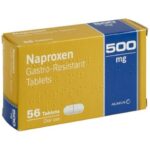Montelukast, sold under the brand name Singulair, is a common medication for asthma and allergies. However, it’s not the only option. This article explores effective Singulair alternatives, including inhaled corticosteroids, leukotriene modifiers, mast cell stabilizers, long-acting beta-agonists, and antihistamines. We’ll examine how these medications work and compare their uses, dosages, and potential side effects.
Comparison table of various Singulair alternatives, including dosage and usage information.
Understanding Singulair and its Mechanism of Action
Singulair belongs to a class of drugs called leukotriene receptor antagonists. Leukotrienes are inflammatory chemicals released during an asthma or allergy attack, causing airway constriction, mucus production, and inflammation. Singulair blocks leukotrienes, preventing these symptoms.
Why Consider Alternatives to Singulair?
While Singulair is effective for many, some individuals experience side effects, find it less effective than other options, or prefer alternatives due to potential neuropsychiatric risks.
Exploring Singulair Alternatives
Leukotriene Modifiers: Similar Mechanism, Different Dosing
Other leukotriene modifiers like zafirlukast (Accolate) and zileuton (Zyflo) work similarly to Singulair. However, they require more frequent dosing, making Singulair potentially more convenient. Zafirlukast is taken twice daily, while zileuton requires four times daily administration.
Inhaled Corticosteroids: First-Line Asthma Treatment
Inhaled corticosteroids (ICS) like budesonide (Pulmicort), fluticasone (Flovent), and beclomethasone (Qvar) are considered the cornerstone of asthma treatment. They reduce airway inflammation more effectively than leukotriene modifiers. Potential side effects include oral thrush (yeast infection).
Proper inhaler technique is crucial for effectively delivering medication to the lungs.
Mast Cell Stabilizers: Preventing Allergic Reactions
Mast cell stabilizers, such as cromolyn sodium (Nasalcrom) and nedocromil sodium (Tilade), prevent the release of histamine and other inflammatory chemicals from mast cells. They are often used to prevent allergy symptoms and exercise-induced asthma.
Long-Acting Beta-Agonists (LABAs): Relaxing Airways
LABAs, like salmeterol (in Advair) and formoterol (in Symbicort), relax and open the airways. They are typically used in combination with ICS for more severe asthma.
Antihistamines: Targeting Histamine for Allergy Relief
Antihistamines, such as loratadine (Claritin), cetirizine (Zyrtec), and fexofenadine (Allegra), block the effects of histamine, another inflammatory chemical involved in allergic reactions. They are effective for relieving allergy symptoms like sneezing, runny nose, and itching.
Natural Alternatives: Complementary Approaches
While not replacements for prescribed medications, natural approaches like breathing exercises, dietary modifications rich in fruits and vegetables, and vitamin supplementation (especially Vitamin D) may offer complementary benefits for managing asthma and allergies. Always consult with a healthcare professional before using natural remedies.
Switching to a Singulair Alternative
Consult your healthcare provider before discontinuing Singulair or starting a new medication. They can help you safely transition to a new treatment plan, minimizing potential withdrawal symptoms and ensuring optimal management of your asthma or allergies.
Consulting with a doctor is essential for personalized asthma and allergy management.
